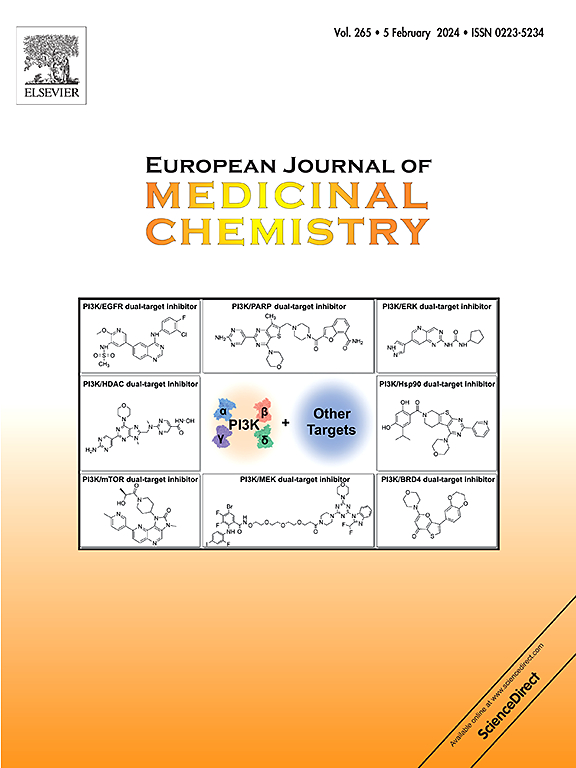癌症治疗p300/CBP抑制剂的药物化学发现与开发
IF 6
2区 医学
Q1 CHEMISTRY, MEDICINAL
引用次数: 0
摘要
p300和CBP (creb结合蛋白)是同源组蛋白乙酰转移酶(HATs),具有转录共激活因子的功能,通过组蛋白和转录因子的乙酰化调节基因表达。它们的失调与各种癌症有关,使它们成为治疗干预的有吸引力的目标。靶向p300/CBP的小分子抑制剂的发现和开发取得了重大进展。这些努力导致了强效和选择性抑制剂的鉴定,如A-485,其特异性靶向HAT结构域,在临床前模型中显示出显著的抗肿瘤活性。基于结构的药物设计和高通量筛选促进了这些抑制剂的优化,提高了它们的选择性和药代动力学性质。此外,共价抑制剂和PROTACs(蛋白水解靶向嵌合体)的发展扩大了针对p300/CBP的武库,提供了调节其活性的新机制。随着一些抑制剂进入临床试验,靶向p300/CBP在肿瘤中的治疗潜力越来越明显。本文回顾了2019年以来报道的p300/CBP抑制剂,重点研究了药物化学优化策略。本文章由计算机程序翻译,如有差异,请以英文原文为准。


Medicinal chemistry approaches to the discovery and development of p300/CBP inhibitors for cancer therapy
p300 and CBP (CREB-binding protein) are homologous histone acetyltransferases (HATs) that function as transcriptional co-activators, playing pivotal roles in regulating gene expression through acetylation of histones and transcription factors. Their dysregulation has been implicated in various cancers, making them attractive targets for therapeutic intervention. Significant advancements have been made in the discovery and development of small-molecule inhibitors targeting p300/CBP. These efforts have led to the identification of potent and selective inhibitors, such as A-485, which specifically targets the HAT domain, demonstrating notable antitumor activity in preclinical models. Structure-based drug design and high-throughput screening have facilitated the optimization of these inhibitors, enhancing their selectivity and pharmacokinetic properties. Additionally, the development of covalent inhibitors and PROTACs (proteolysis-targeting chimeras) has expanded the arsenal against p300/CBP, offering novel mechanisms to modulate their activity. With several inhibitors progressing into clinical trials, the therapeutic potential of targeting p300/CBP in oncology is becoming increasingly evident. This review examines p300/CBP inhibitors reported from 2019, focusing on the medicinal chemistry optimization strategies.
求助全文
通过发布文献求助,成功后即可免费获取论文全文。
去求助
来源期刊
CiteScore
11.70
自引率
9.00%
发文量
863
审稿时长
29 days
期刊介绍:
The European Journal of Medicinal Chemistry is a global journal that publishes studies on all aspects of medicinal chemistry. It provides a medium for publication of original papers and also welcomes critical review papers.
A typical paper would report on the organic synthesis, characterization and pharmacological evaluation of compounds. Other topics of interest are drug design, QSAR, molecular modeling, drug-receptor interactions, molecular aspects of drug metabolism, prodrug synthesis and drug targeting. The journal expects manuscripts to present the rational for a study, provide insight into the design of compounds or understanding of mechanism, or clarify the targets.

 求助内容:
求助内容: 应助结果提醒方式:
应助结果提醒方式:


